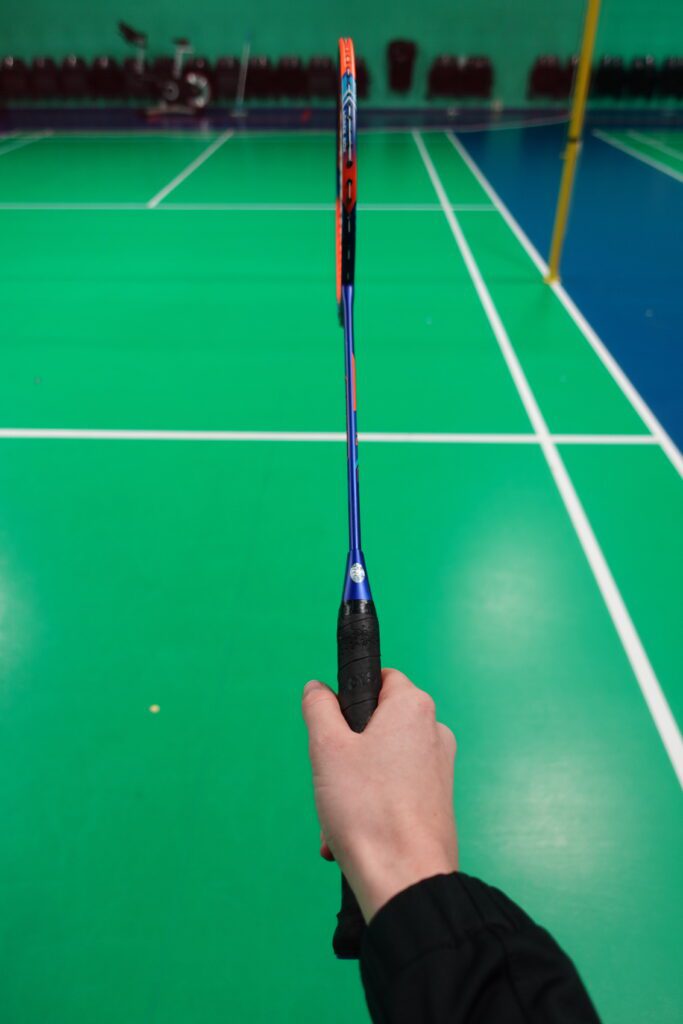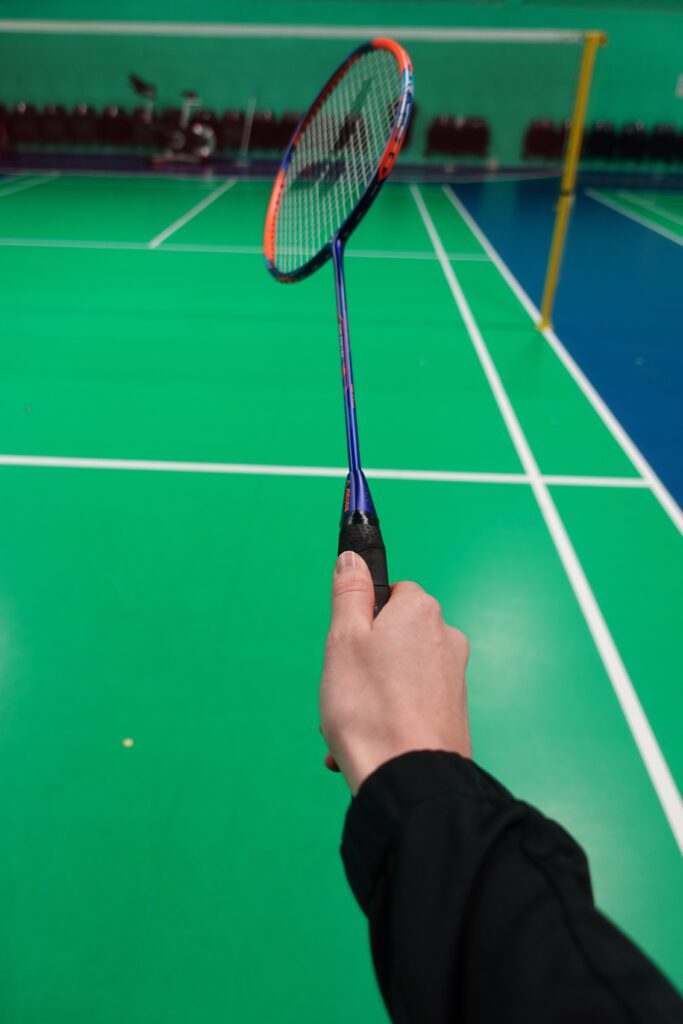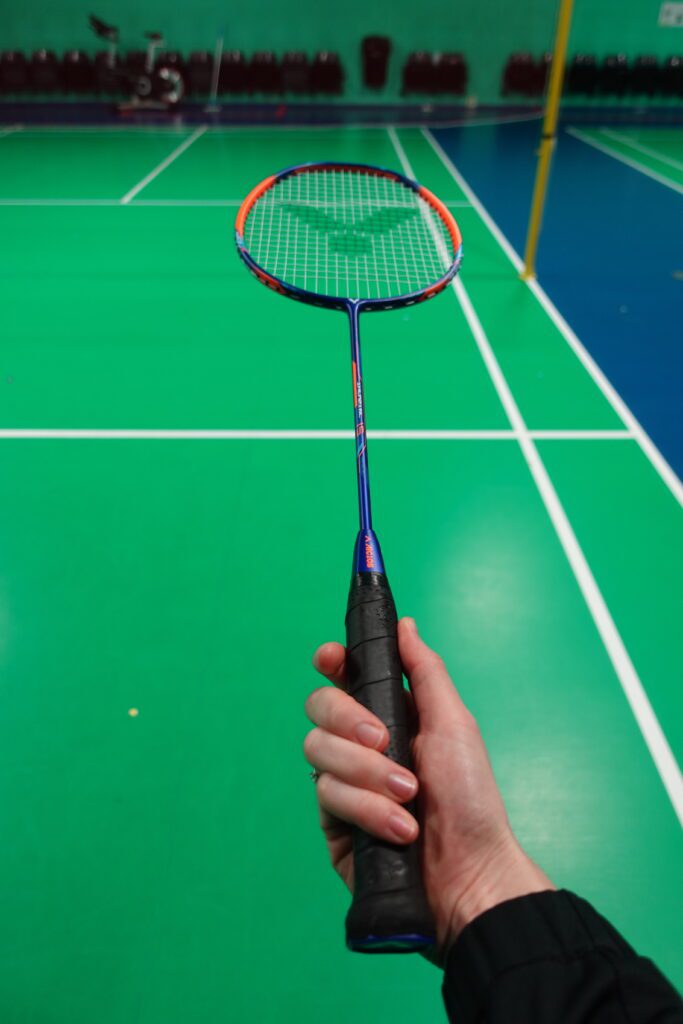How to Grip a Badminton Racket
Greetings, racket warriors! Ever found yourself in the middle of a heated match, and suddenly, you look down and think, “Am I even holding this thing right?” Well, you’ve come to the right place! Welcome to the ultimate guide on how to grip a badminton racket.
Now, you might be thinking, “Come on, it’s just gripping a racket. How complicated can it be?” And if you are, then my friend, you’re about to enter a whole new realm of badminton wisdom. A correct grip isn’t just about avoiding your racket flying out of your hand mid-swing (although, admittedly, that would be a sight to see!). It’s about precision, control, and delivering a smashing shot that leaves your opponents gawking.
But here’s the kicker: there’s not just one way to grip your racket in badminton – oh no, that would be far too simple. There are four fundamental grips that you should have in your badminton arsenal. I’ll guide you through each of them, complete with personal anecdotes, the shots they are most suitable for, and even some comical memories involving some rookie errors – and let’s face it, we’ve all been there.
So, grab your racket and a comfy seat. Let’s get to grips (pun absolutely intended!) with how to grip the badminton racket.
What this article will teach about badminton grips
Brace yourselves, badminton enthusiasts, as we dive into the exciting world of badminton grips! This article will teach you about the four grips in badminton that are absolutely critical to your game. We’re going to uncover the ins and outs of each grip, including the much-discussed forehand grip badminton players can’t seem to get enough of, and the backhand grip badminton professionals swear by.
Think of these grips as the Infinity Stones of badminton – together they can pretty much make you unstoppable. Each grip has its own unique features and specific shots it’s best suited for. And if you’re lucky, I’ll throw in some amusing stories from my own journey learning these grips – because let’s face it, who doesn’t love a good laugh at someone else’s expense?
But hey, no judgment here! We’ve all had our share of awkward swings and questionable shots. It’s all part of the journey. We won’t be covering how to apply grip tape, just how to actually hold the racket. So without further ado, let’s venture into the world of badminton grips. Prepare for some fun revelations, surprises, and yes, lots of helpful advice!
How to Grip a Badminton Racket – All the grips
Forehand Grip
Ah, the forehand grip, my old friend! This grip has saved my badminton games more times than I can count. Let me take you back to one of my initial days playing badminton – young, ambitious, and totally clueless about grips. Holding my racket just felt…awkward. But then, an experienced player advised me to think of it like a handshake. “Pretend you’re shaking hands with your racket,” he said, and boom! Suddenly it all clicked.

Now, I’m passing on that same wisdom to you. The forehand grip is your go-to grip for an array of shots such as the forehand clear, smash, drop or slice, lifts, and net shots. It’s as simple as slotting the racket handle into your hand, keeping your fingers loosely wrapped around it in a way that it forms a ‘V’ shape, with a small space in between. Imagine shaking someone’s hand, and there you have it – your forehand grip!
Keep in mind, you want to maintain a light grip, not strangling the poor racket handle – it’s not going anywhere, I promise! And here’s a fun tip: try practicing the grip without your racket first. It might seem a bit goofy, but trust me, it makes things so much clearer when you finally bring the racket into the equation. So there you have it, folks, the handshake of champions – the forehand grip!
Backhand Grip
Now, let’s talk about the backhand grip, a stroke of genius in the badminton world that changed my game forever. When I was first introduced to it, I was told to think of it like holding a frying pan. I remember thinking, “Really? A frying pan? I’m trying to score points here, not flip pancakes!” But trust me, this simple analogy worked wonders.

Just like holding a frying pan, you want your thumb to be on top and your fingers to relax around the sides when using the backhand grip. It might feel a bit unusual at first, and that’s okay. I too had my fair share of fumbles initially, almost flipping my racket like a pancake a few times!
This grip comes in handy for backhand serves, backhand drives, and doubles defense. But be careful not to use it for backhand rear court shots, that’s a different beast altogether. Remember, it’s all about where your thumb rests. It should be on the wider part of the grip with your racket strings facing upwards.
Once you get a hang of this, you’ll be firing backhands like a pro, leaving your opponents spellbound. So, next time you’re in the kitchen, pick up that frying pan and remember the backhand grip. Just remember to take out the pancake first!
Bevel Grip
Next on our list is the bevel grip, a middle ground between the forehand and backhand grip, and my go-to grip for some tricky situations on the court. I remember being introduced to it during a heated game, and boy, did it take some getting used to! It was like learning to drive stick shift after only driving automatic – a bit confusing at first, but invaluable once you get the hang of it.

The bevel grip is like a chameleon of the badminton world. It’s a halfway point between the forehand grip, where your racket strings are facing one way, and the backhand grip, where the strings face the opposite way. With the bevel grip, the strings are right in the middle.
So how do you get into this elusive bevel grip? Start off in the backhand grip position and then bring your racket head clockwise so that your thumb rests on this bevel or ridge. A bit tricky, I know! The first few times I tried it, I ended up in some hybrid grip that was helpful for absolutely nothing. But with a little patience and practice, you’ll master it in no time.
This grip can be your savior for certain forehand or backhand net shots, especially when you’re stretched out wide. It’s also a must for your backhand rear court corner. So, put on your learning cap, practice this grip, and prepare to amaze your friends with your chameleon-like adaptability on the court.
Panhandle Grip
Last but certainly not least, we come to the panhandle grip, the black sheep of badminton grips, and ironically, the grip that most beginners find the most comfortable to use. I’ll confess, I was no different when I started. This grip felt so natural that I was tempted to use it all the time. However, I soon discovered that it was best saved for a very specific situation: the late backhand.

I know what you’re thinking, but bear with me. In the panhandle grip, you place your thumb on the side of the racket, almost pinching the sides with your thumb and fingers. Imagine you’re holding a frying pan, ready to sauté some onions, and you’ll have a general idea.
While this grip may feel natural and easy, it should mainly be used when you’re late on the backhand. It’s not the most powerful or versatile grip, but in a pinch (no pun intended), it can save the day.
It’s funny, the first time I used this grip in a game, my opponent looked at me like I’d lost my mind. But when I returned his powerful smash with a simple flick of the wrist, the look on his face was priceless. So, even if it feels a bit odd, give the panhandle grip a go. It may just turn into your secret weapon on the court!
Final Thoughts
So there you have it – a whirlwind tour through the four key grips of badminton: the forehand and backhand grip in badminton, as well as the bevel and panhandle grip. Each grip is a unique tool with its own strengths, perfect for specific situations in a match. Like a painter with different brushes, knowing when to use which grip is what elevates your game from simply hitting a shuttlecock to creating masterstrokes on the court.
Remember, mastery doesn’t come overnight. I’m sure my tales of struggling with these grips have given you a chuckle or two, but they’re proof that even with a few hiccups along the way, you can and will get there. Practice these grips, understand their uses, and most importantly, learn to switch between them seamlessly.
It might seem like a lot to take in right now but don’t let it overwhelm you. With time and practice, shifting grips will become second nature. And don’t forget to have fun while you’re at it. After all, isn’t that why we all fell in love with badminton in the first place? So, go ahead, embrace the challenge, and take your game to the next level with these grips. The court is yours!
Now, while understanding and mastering these grips is crucial, it’s equally important to have the best badminton racket in your hand. Just as a master painter needs quality brushes to create a masterpiece, a good badminton player needs a quality racket to make those game-winning strokes. The best badminton racket is not just about the brand or price tag, it’s about how well it fits your hand, how comfortably you can switch between grips, and ultimately, how much control it gives you over your game. Remember, your racket is an extension of your arm – together with these four key grips, it becomes the magic wand that commands the shuttle to dance to your tune on the court. So choose wisely, and play brilliantly!







